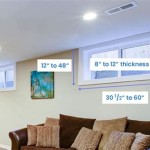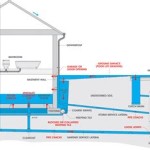Best Paint For Basement Cement Block Walls
Basement cement block walls, while structurally sound, present unique challenges when it comes to painting. Their porous nature, susceptibility to moisture, and alkaline composition necessitate careful consideration when selecting the appropriate paint. Choosing the wrong paint can lead to peeling, blistering, efflorescence (white, chalky deposits), and ultimately, a wasted effort and expense. Identifying the best paint for basement cement block walls requires understanding these challenges and selecting products specifically formulated to overcome them. The longevity and aesthetic appeal of a finished basement depend heavily on this initial decision.
Several factors influence the performance of paint on cement block. The inherent alkalinity of concrete can react negatively with certain paint formulations, causing saponification, a chemical process that breaks down the binder in the paint, leading to its eventual failure. Moisture migration through the porous block is another critical consideration. Basement walls are often exposed to ground moisture, which can permeate the block and push against the paint film, leading to blistering and peeling. Furthermore, the rough texture of cement block walls can make it difficult to achieve a smooth, even finish, requiring more paint and specialized application techniques.
Therefore, the selection process must prioritize paints that offer excellent adhesion, moisture resistance, and alkali resistance. Specific types of paints, such as elastomeric coatings, epoxy paints, and certain acrylic latex paints formulated for masonry, are designed to address these issues. Each option presents its own set of advantages and disadvantages, which must be weighed against the specific conditions of the basement and the desired aesthetic outcome.
Understanding Cement Block and Its Challenges
Cement block, also known as concrete masonry unit (CMU), is a widely used construction material renowned for its strength and durability. However, its composition and structure create specific challenges when preparing it for paint. Understanding these inherent properties is crucial for making informed decisions about paint selection and application.
The primary challenge stems from the porosity of cement block. The material is riddled with microscopic pores that readily absorb moisture from the surrounding environment. In a basement setting, this moisture often originates from the surrounding soil, seeping through the foundation and into the block. This continuous moisture influx can compromise the adhesion of many conventional paints. As the moisture migrates outward, it exerts pressure on the paint film, leading to blistering, peeling, and a general breakdown of the painted surface.
Furthermore, cement block is naturally alkaline, with a high pH level. This alkalinity can react chemically with certain paint binders, particularly those found in oil-based paints. This chemical reaction, known as saponification, causes the paint film to soften, become sticky, and eventually disintegrate. While oil-based paints were once favored for their durability, their susceptibility to saponification makes them unsuitable for direct application to cement block walls without proper preparation and priming.
In addition to porosity and alkalinity, the rough texture of cement block presents another challenge. The uneven surface requires more paint to achieve adequate coverage compared to smooth surfaces. The texture also affects the aesthetic outcome, potentially resulting in an uneven finish that highlights the block's inherent imperfections. Proper surface preparation, including filling cracks and leveling imperfections, is essential for achieving a professional-looking paint job.
Finally, efflorescence is a common issue encountered in basement environments. This is the formation of white, powdery deposits on the surface of the cement block, caused by soluble salts migrating to the surface along with moisture. These salts can interfere with paint adhesion and create an unsightly appearance. Addressing efflorescence before painting is crucial for ensuring the longevity and aesthetic quality of the paint job.
Types of Paint Suitable for Cement Block Walls
Given the unique challenges posed by cement block walls in basements, selecting the right type of paint is paramount. Several options are available, each with its own strengths and weaknesses. The choice ultimately depends on the specific conditions of the basement, the desired aesthetic outcome, and budget considerations.
Elastomeric Paint: Elastomeric paint is a high-build coating specifically designed for masonry surfaces exposed to extreme weather conditions and moisture. Its primary advantage lies in its exceptional flexibility and elongation properties. This allows the paint film to stretch and contract with the underlying cement block as it expands and contracts due to temperature and moisture fluctuations. This flexibility minimizes cracking and peeling, making it an excellent choice for basements with high moisture levels or significant temperature variations. Elastomeric paints typically have a thicker consistency than standard paints and require specialized application techniques, such as back-rolling, to ensure proper coverage and adhesion. While more expensive than other options, elastomeric paint offers superior protection and longevity in challenging environments.
Epoxy Paint: Epoxy paint is a two-part system consisting of a resin and a hardener. When mixed together, these components create a highly durable and chemical-resistant coating. Epoxy paints are particularly well-suited for basement floors that are subject to heavy traffic or spills. While they offer excellent resistance to moisture and chemicals, epoxy paints can be more rigid than elastomeric paints and may be prone to cracking if the underlying cement block shifts or expands significantly. Epoxy paints also require meticulous surface preparation and application to ensure proper adhesion and a smooth finish. The curing process involves the release of potentially harmful fumes, so adequate ventilation is essential during application.
Acrylic Latex Paint (specifically formulated for masonry): Acrylic latex paint is a water-based option that offers good adhesion, breathability, and alkali resistance. However, not all acrylic latex paints are suitable for cement block walls. It is crucial to select a product specifically formulated for masonry surfaces. These masonry-specific acrylic latex paints often contain additives that improve their ability to penetrate the porous surface of the cement block and resist alkaline attack. They are generally easier to apply than elastomeric or epoxy paints and offer a wider range of color options. However, they may not provide the same level of moisture protection as elastomeric coatings, particularly in basements with high moisture levels. Multiple coats may be necessary to achieve adequate coverage and protection.
Cement-Based Paints: Cement-based paints are composed of Portland cement, pigments, and additives. They create a breathable, durable coating that chemically bonds to the cement block. This type of paint is particularly well-suited for below-grade applications, as it allows moisture vapor to permeate through the coating without causing blistering or peeling. Cement-based paints are also highly resistant to alkaline attack and efflorescence. However, they typically offer a limited color palette and require careful mixing and application to achieve a uniform finish.
Surface Preparation and Application Techniques
Even the best paint will fail if applied to a poorly prepared surface. Proper surface preparation is crucial for ensuring the longevity and aesthetic quality of the paint job. This involves cleaning, repairing, and priming the cement block walls before applying the final coat of paint.
The first step is to thoroughly clean the walls to remove any dirt, dust, debris, and efflorescence. A stiff brush and a solution of water and trisodium phosphate (TSP) can be used to scrub the walls clean. If efflorescence is present, a muriatic acid solution (diluted according to the manufacturer's instructions and handled with extreme caution) may be necessary to neutralize the salts. After cleaning, rinse the walls thoroughly with clean water and allow them to dry completely.
Next, inspect the walls for any cracks, holes, or imperfections. Use a concrete patching compound or hydraulic cement to fill these voids. Allow the patching compound to dry completely according to the manufacturer's instructions and then sand the repaired areas smooth. This will create a more uniform surface for painting.
Priming is an essential step in preparing cement block walls for paint. A good-quality masonry primer will help to seal the porous surface, improve paint adhesion, and reduce the alkalinity of the cement block. Choose a primer specifically formulated for masonry surfaces and apply it according to the manufacturer's instructions. Allow the primer to dry completely before applying the paint.
When applying the paint, use a brush, roller, or sprayer. For cement block walls, a thick-nap roller is often recommended to ensure that the paint penetrates the pores and crevices of the surface. Apply the paint in thin, even coats, allowing each coat to dry completely before applying the next. Multiple coats may be necessary to achieve adequate coverage and a uniform finish. Back-rolling the paint after spraying can help to work the paint into the pores and improve adhesion. Proper ventilation is essential during painting, especially when using solvent-based paints.
Finally, consider the impact of temperature and humidity on the paint's drying time and performance. Avoid painting when temperatures are extremely high or low, or when humidity is excessive. Follow the paint manufacturer's recommendations for optimal application conditions.

Painting Cinder Block Walls In A Basement Or Re Paint Them

Painting Cinder Block Walls In A Basement Or Re Paint Them

Best Paint For Concrete Walls In A Basement

6 Best Paints For Concrete Basement Walls

Painting Cinder Block Walls In A Basement Or Re Paint Them

Painting Cinder Block Walls In A Basement Or Re Paint Them
Best Basement Wall Paint On 100 Year Old Cinderblocks Diy Home Improvement Forum

Basement Finishing Do Not Paint Your Walls

Painting Cinder Block Walls In A Basement Or Re Paint Them

Basements And Foundations Tips







